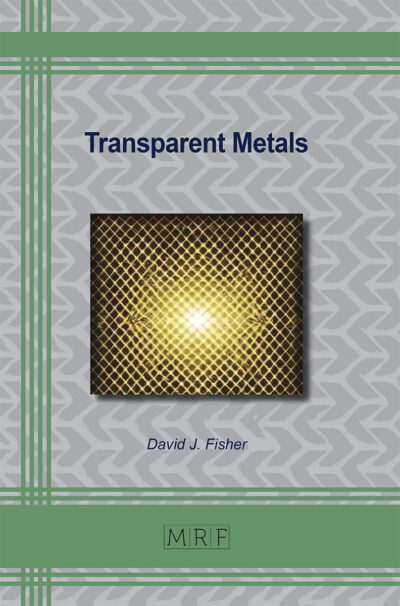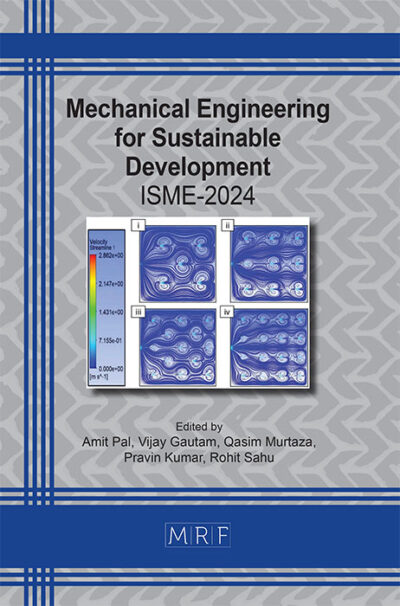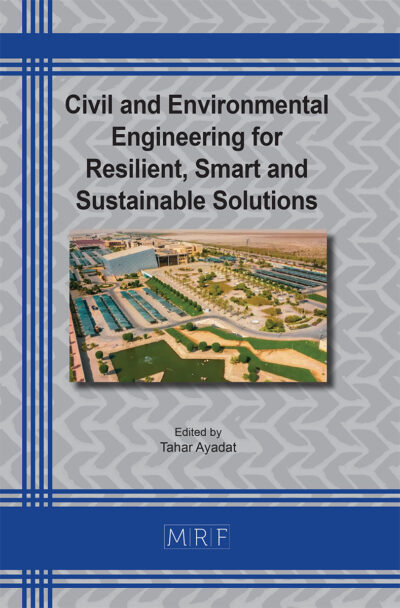Polyurethane grout as repair material for concrete structures: Performance evaluation
Sadi Ibrahim HARUNA, Yasser E. IBRAHIM, Abdurra’uf M. GORA, M.N. IBRAHIM
Abstract. The effectiveness of repair work relies on whether the interface substrate can achieve sufficient bond strength when subjected to numerous stresses. This study investigated the bond properties of repaired normal concrete (NC-to-NC) elements, including cube, beam, and U-shaped specimens, after undergoing natural fracture due to flexural and tensile stresses. The specimens were repaired using a polyurethane (PU) matrix by gluing the two parts and tested for compression, splitting, and impact tests to evaluate the bond strength properties. The result revealed that the PU matrix effectively repairs NC substrate with adequate bond strength, which exceeds the minimum allowable bond strength specified by the ASTM ACI 546-06 for rehabilitation of impaired concrete structure. The reference beams exhibit the highest ultimate load capacity of 15.6kN with lower deflection than the repaired specimens. The mean number of blows at the cracking stages appeared nearly equal for both reference and repaired NC-to-NC specimens. The reference specimens exhibit an average number of 24 blows and 31 blows at the first and failure stages, respectively, which are higher than that of NC-to-NC repaired specimens by 9.1% and 5.2%. Indicating the effectiveness of the PU matrix in bonding the two pieces together with high strength under repeated impact loads.
Keywords
Polyurethane Grout, Concrete, Bond Strength, Drop-Weight Impact Test, Repair
Published online 2/25/2025, 8 pages
Copyright © 2025 by the author(s)
Published under license by Materials Research Forum LLC., Millersville PA, USA
Citation: Sadi Ibrahim HARUNA, Yasser E. IBRAHIM, Abdurra’uf M. GORA, M.N. IBRAHIM, Polyurethane grout as repair material for concrete structures: Performance evaluation, Materials Research Proceedings, Vol. 48, pp 569-576, 2025
DOI: https://doi.org/10.21741/9781644903414-62
The article was published as article 62 of the book Civil and Environmental Engineering for Resilient, Smart and Sustainable Solutions
![]() Content from this work may be used under the terms of the Creative Commons Attribution 3.0 license. Any further distribution of this work must maintain attribution to the author(s) and the title of the work, journal citation and DOI.
Content from this work may be used under the terms of the Creative Commons Attribution 3.0 license. Any further distribution of this work must maintain attribution to the author(s) and the title of the work, journal citation and DOI.
References
[1] J.J. Assaad, Development and use of polymer-modified cement for adhesive and repair applications, Constr. Build. Mater. 163 (2018) 139–148. https://doi.org/10.1016/j.conbuildmat.2017.12.103
[2] A. Al-shawafi, H. Zhu, S.I. Haruna, Z. Bo, S.A. Laqsum, S.M. Borito, Impact resistance of ultra-high-performance concrete retrofitted with polyurethane grout material: Experimental investigation and statistical analysis, Structures. 55 (2023) 185–200. https://doi.org/10.1016/j.istruc.2023.06.043
[3] N.M. Alderete, Y.A. Villagrán Zaccardi, N. De Belie, Mechanism of long-term capillary water uptake in cementitious materials, Cem. Concr. Compos. 106 (2020) 103448. https://doi.org/10.1016/j.cemconcomp.2019.103448
[4] Y.A. Villagrán Zaccardi, N.M. Alderete, N. De Belie, Improved model for capillary absorption in cementitious materials: Progress over the fourth root of time, Cem. Concr. Res. 100 (2017) 153–165. https://doi.org/10.1016/j.cemconres.2017.07.003
[5] J. Shao, H. Zhu, X. Zuo, W. Lei, S. Mirgan, J. Liang, F. Duan, Effect of waste rubber particles on the mechanical performance and deformation properties of epoxy concrete for repair, Constr. Build. Mater. 241 (2020) 118008. https://doi.org/10.1016/j.conbuildmat.2020.118008
[6] A. Afzal, A. Kausar, M. Siddiq, Role of polymeric composite in civil engineering applications: a review, Polym. Technol. Mater. 59 (2020) 1023–1040. https://doi.org/10.1080/25740881.2020.1719141
[7] G. Liu, H. Otsuka, Y. Mizuta, A. Shimitsu, A foundational study on static mechanical characteristics of the super lightweight and high strength material using fly-ash, JOURNAL-SOCIETY Mater. Sci. JAPAN. 55 (2006) 738.
[8] H.K. Hussain, L.Z. Zhang, G.W. Liu, An experimental study on strengthening reinforced concrete T-beams using new material poly-urethane-cement (PUC), Constr. Build. Mater. 40 (2013) 104–117. https://doi.org/10.1016/j.conbuildmat.2012.09.088
[9] S. Ibrahim Haruna, H. Zhu, W. Jiang, J. Shao, Evaluation of impact resistance properties of polyurethane-based polymer concrete for the repair of runway subjected to repeated drop-weight impact test, Constr. Build. Mater. 309 (2021) 125152. https://doi.org/10.1016/j.conbuildmat.2021.125152
[10] W. Jiang, H. Zhu, S. Ibrahim Haruna, J. Shao, Y. Yu, K. Wu, Mechanical properties and freeze–thaw resistance of polyurethane-based polymer mortar with crumb rubber powder, Constr. Build. Mater. 352 (2022) 129040. https://doi.org/10.1016/j.conbuildmat.2022.129040
[11] K. Liu, J. Tong, M. Huang, F. Wang, H. Pang, Model and experimental studies on the effects of load characteristics and polyurethane densities on fatigue damage of rigid polyurethane grouting materials, Constr. Build. Mater. 347 (2022) 128595.
[12] B.A. Tayeh, B.H.A. Bakar, M.A.M. Johari, Y.L. Voo, Mechanical and permeability properties of the interface between normal concrete substrate and ultra high performance fiber concrete overlay, Constr. Build. Mater. 36 (2012) 538–548.
[13] A.I.B. Farouk, S.I. Harunaa, Evaluation of Bond Strength between Ultra-High-Performance Concrete and Normal Strength Concrete: An Overview, J. Kejuruter. 32 (2020) 41–51.
[14] A.I.B. Farouk, Z. Jinsong, Prediction of Interface Bond Strength Between Ultra-High-Performance Concrete (UHPC) and Normal Strength Concrete (NSC) Using a Machine Learning Approach, Arab. J. Sci. Eng. (2022). https://doi.org/10.1007/s13369-021-06433-6
[15] X. Li, M. Wang, D. Zheng, H. Fang, F. Wang, J. Wan, Study on the failure mechanism between polyurethane grouting material and concrete considering the effect of moisture by digital image correlation, J. Build. Eng. 67 (2023) 105948. https://doi.org/10.1016/j.jobe.2023.105948
[16] JGJ55-2011, Chinese National Standards,”specification for mix proportion of ordinary concrete..
[17] S.I. Haruna, H. Zhu, J. Shao, Experimental study, modeling, and reliability analysis of impact resistance of micro steel fiber‐reinforced concrete modified with nano silica, Struct. Concr. (2022). https://doi.org/10.1002/SUCO.202100651
[18] ASTM C496/C496M-04e1 standard test method for splitting tensile strength of cylindrical concrete specimens, Annu. B. ASTM Stand. 4 (2008).
[19] ASTM. C78, Standard test method for flexural strength of concrete, ASTM Int. West Conshohocken, Pennsylvania, United States. (2016).
[20] G. Chynoweth, R.R. Stankie, W.L. Allen, R.R. Anderson, W.N. Babcock, P. Barlow, J.J. Bartholomew, G.O. Bergemann, R.E. Bullock, F.J. Constantino, Concrete repair guide, ACI Committee, Concr. Repair Man. 546 (1996) 287–327.












